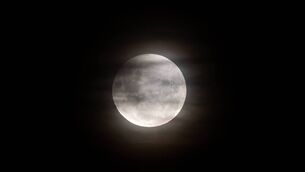Bare necessities life for the polar bear
The animal was wearing a radio collar, fitted two years previously to log her movements. Water temperatures ranged from 2 to 6° C. The bear survived, but her cub, swimming with her, disappeared. Nor did the mother’s journey end when she reached the pack ice. She travelled a further 1,800km, walking and swimming. Recaptured, her weight had fallen by 22%.
Polar bears hunt around sea ice. When this melts, they retreat onto land. Only the females hibernate, giving birth to their babies. In late spring and early summer, both sexes head northwards. The cold, oxygen-rich waters of the Arctic abound in fish, food for ringed and bearded seals. These are eaten by bears. The seals surface for air at holes in the ice. A polar bear’s sense of smell is legendary; it can detect the breath of a seal kilometres away. The great white predator homes in on the odour and waits beside the ice hole. When a seal surfaces, it is seized and dragged to its death.











